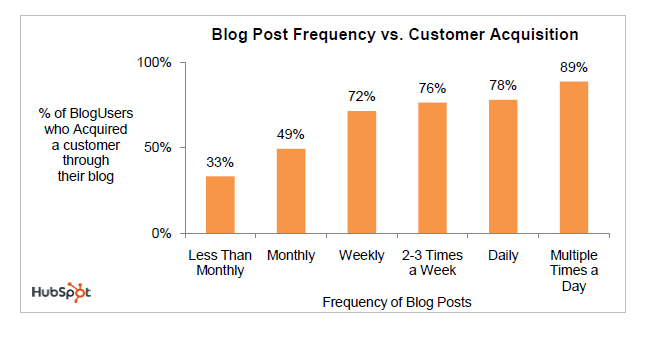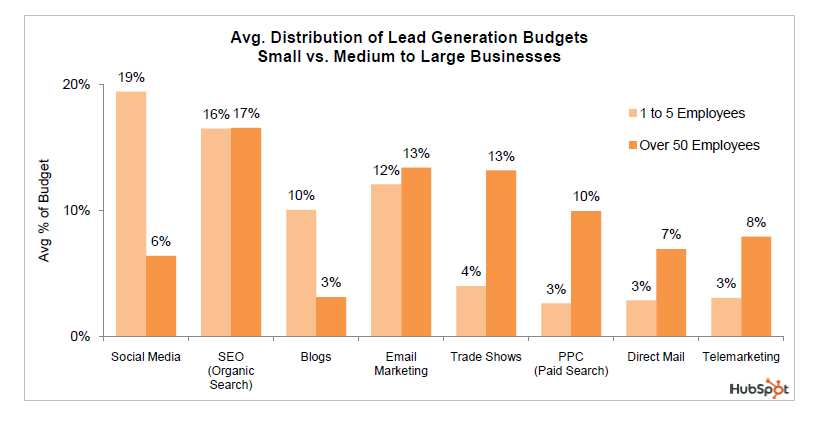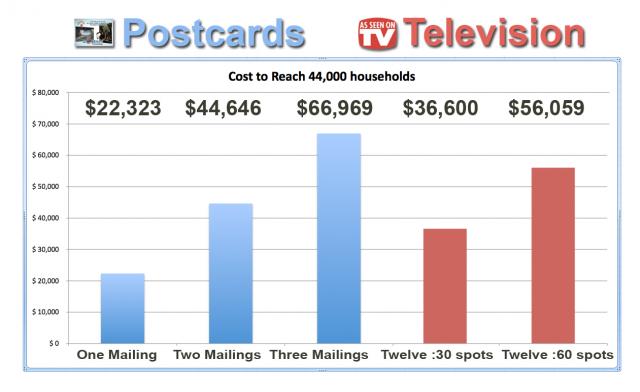Polly morgan visits the Canon Boot Camp in Prague
Monthly Archives: April 2011
Social Media for Business: Crossing the Chasm

I figure that most people are pretty aware that there is a “generational gap” in the world of online marketing. Anyone over the age of 35 is probably having a tougher time understanding and shifting with the tides of marketing, as things go digital. There’s even a new name I heard that describes the younger set, “Digital Native.” It’s a great description.
But what about all us non-digital natives?
How do you understand something that you can’t really see or touch? Marketing online is a bit like being on a Ghost Hunter’s TV show. Talking to things that aren’t there, or are they? Is my marketing really working? I have a hard time even describing what it’s like for older marketers. But I finally came up with a description.
For many business owners who have had a website for the past few years, they understand the importance of having a presence online. However, they may be getting visitors and NO sales. Why is that? Weren’t we supposed to just build a website, and everyone would just show up and buy something? How come “someone” shows up, but they don’t take that next step?
Many “effective marketing plans” fall down right at that spot. Visitors arrive, and they are standing on the edge of a cliff, except they don’t see the chasm between them and actually signing up as an actual lead. If this is happening on your site, what you are missing is a conversion process. That conversion process is the virtual bridge between a visitor to one of your web presences, and actually buying something.
The first step of this conversion process is really understanding your target market. What do they need? What does your consumer analysis tell you about the people that would buy from you, if they could find you?
Are your website visitors falling into a chasm? If there aren’t any sales coming from your website or blog, but you have some consistent volume of online visitors, why yes, they are! That means the content of the site needs an overhaul, probably, as well as implementation of a conversion process.
Hubspot’s Marketing Experts on State of Inbound Marketing: Part 8
Hubspot, a leader in Inbound Marketing, recently surveyed 644 companies to ascertain the state of both Traditional Media (print ads, telemarketing, tradeshows, etc.) & Inbound Marketing. As Hubspot defines it: “Inbound Marketing is a set of marketing strategies and techniques focused on pulling relevant prospects and customers towards a business and it’s products.”
This is part 8 of a 13 part series of blog posts that share bite-size portions of Hubspot’s overall report, “The 2011 State of Inbound Marketing.” If you’d like a full copy of the report, feel free to contact me by clicking here or search for the report by name on Google.

So you’ve started a blog and just don’t have the time to post frequently? Well, you’re in good company. The majority of companies surveyed blog weekly. The minority blog daily. Face it, it’s tough to come up with good, unique content.
We use a system I call Topic Optimized Marketing. While it does all the technical aspects right, like the utilization of long tail keywords, is also makes the implementation of a corporate social media plan easy. About as difficult as sending an email, once the content is created.
In other words, if you can log in to Gmail and send an email, you could use Topic Optimized Marketing. And so can all your employees or ghost writers. It even allows your customers to post stories and successes to your blog with the click of a button.
Worried about random posts and rants from customers? Relax. The whole system is moderated and only approved content appears on the system.
Regardless of what platform is utilized, the main thing is to create content and post it frequently.
Click this button to Connect

Interested in learning more about how The Association can help you implement enterprise social media and Inbound Marketing? Visit my resources blog for helpful videos or fill out a request form here.
Too Much Sheet Before Breakfast
Each morning my wife and I, upon arising, make our bed together. For some unexplained but persistent reason, there is always a lot more cover on my wife’s side of the bed than mine. Every morning, for decades now, I’ve been going through bed-making training.
Each morning we make the bed. My wife, being a tidy homemaker wants to be sure that the length the sheet hangs down is exactly even on her side of the bed as on my side of the bed. This is in case Martha Stewart drops by.
Maybe some of you go through this ritual in your life. I’m resigned to it. Here’s the conversation each morning as we make our bed.
“I need more sheet,” she says.
“You want me to give you more sheet?” I say.
“Yes. I want you to give me more sheet.”
“I thought I had already given you too much sheet.”
“No. I want some more sheet.”
That’s how it goes. Recently, we had a big breakthrough. Here’s how it went:
“You gave me too much sheet, Honey,” I say.
“You want me to take some sheet back?”
“Yes. I want you to take back that sheet.”
She smiles triumphantly.
“You can’t take my sheet, can you.”
“No,” I answer. “There’s only so much sheet I can take.”
The only time I don’t get sheet from my wife is when we stay in a hotel. The maid makes the bed.
THE MORALE OF THE STORY IS….
If you want to get less sheet from your wife, take her on a trip.
(This story is rated by Flesch-Kincaid at 2nd Grade Level)
Hubspot’s Marketing Experts on State of Inbound Marketing: Part 7
Hubspot, a leader in Inbound Marketing, recently surveyed 644 companies to ascertain the state of both Traditional Media (print ads, telemarketing, tradeshows, etc.) & Inbound Marketing. As Hubspot defines it: “Inbound Marketing is a set of marketing strategies and techniques focused on pulling relevant prospects and customers towards a business and it’s products.”
This is part 7 of a 13 part series of blog posts that share bite-size portions of Hubspot’s overall report, “The 2011 State of Inbound Marketing.” If you’d like a full copy of the report, feel free to contact me by clicking here or search for the report by name on Google.

If a company is going to expect new customer acquisition using organic search with the use of blogs, the best bet is to gear up for posting weekly as a minimum level of activity. Ideally a company would post multiple times per day, but often this isn’t possible for a new business just breaking into the brave new world of social media.
If you can move from posting monthly to posting daily, the chances of acquiring a customer through blogging increases by about 30%. I think that’s worth the effort!
Having trouble coming up with content? Get a long list of long tail keywords that are applicable to your activity, and base your campaign around those words. The list will give you ideas of what to blog about that people are actually searching for right now. When you do write articles, write long pieces on each topic you can break up into smaller posts. It’s easier mentally!
Already blogging? How do you come up with content for your enterprise social media campaign?
Click this button to Connect

Interested in learning more about how The Association can help you implement enterprise social media and Inbound Marketing? Visit my resources blog for helpful videos or fill out a request form here.
Online Visibility and Press Releases, Part VI
 Note: This is Part VI in an seven-part series I’m writing about Press Releases. Press releases are possibly an overlooked item in the enterprise social media toolbox, so I’m going to cover a few points and talk about how I’ve used them successfully for client campaigns.
Note: This is Part VI in an seven-part series I’m writing about Press Releases. Press releases are possibly an overlooked item in the enterprise social media toolbox, so I’m going to cover a few points and talk about how I’ve used them successfully for client campaigns.
The overall picture: Where do Press Releases fit? When I develop an online campaign, I consider short range, medium range and long range tools. In the case of a new business or product line, Press Releases can be an excellent short range tool for gaining visibility on search engines. But Press releases don’t last forever! So they must be followed up with medium range and long range tools that do have staying power. Social media and websites, for example. Blogging is another great way to feature yourself more permanently.
When I say Press Releases don’t last forever, I really mean they don’t stay on the first page of Google and other search engines. Of course, they are still online and can be found through search. There are a number of factors affecting how it shows up in search. Long tail keywords are a big one.
However, if you know your target market well, writing relevant content that will be popular should be fairly easy to do. If you’re not going to ask the actual people you’re writing for (or lacking the services of a market survey company), at least consider the kind of information you’d be interested in hearing. Or read articles written by others on the same topic to get some ideas.
By writing on relevant topics that are unique, useful and interesting, you’ll find the time, effort and money invested into a typically short-range, instant-visibility tool just might extend into a long-range visibility tool. We’re all busy getting the show on the road, so try to make each effort into an effective marketing plan count for the long term. Don’t brush off anything, be as thorough as you can considering the resources you have, then push it a little more.
Here’s to the success of your 2011 market development strategy!
Is it possible to be happy on the internet?
Is the Internet working out for you? Is your website being found? Are the visitors you’re getting the ones you want?
A lot of people embraced the Internet and it’s promise of a new life with abundant cash flow. Most of us have gone through a huge learning curve to master new terms and technology to be able to "surf the web". Then, we set up shop with our own website. We waited for millions of visitors to come by and make us millionaires. But for a lot of people that never happened. Even worse, nobody ever came by their carefully thought out website. Bummer.
"Experts" we consulted told us that Google didn’t consider our site "relevant", hence the low ranking in searches.
Are you on page 3,563,295 on a Google search? Next to the guy who can show you how to recycle paper towels at home?
Being told you’re irrelevant you have only two options: get relevant or buy your way to the top with a Pay Per Click AdWords campaign.
A lot of people are gambling with their Pay Per Click campaign. The money for each click goes out fast but the results are not as stunning as they’d hoped. One of our clients had a $10k a month Pay Per Click / AdWords campaign. He told us that two months before our campaign was to launch, he shut off his earlier Pay Per Click campaign. During those two months his Internet leads didn’t drop at all! This convinced him PPC didn’t work. The truth is badly-done PPC doesn’t work. Just like a badly done web strategy doesn’t lift your "relevancy" in Google’s eyes. When we launched our PPC campaign he had 8.5% conversions in the first week. So PPC can be done correctly, which makes sense because I don’t really think Google is trying to fleece everyone.
It’s kind of like Vegas. Google has set up the game to reward those most relevant. Whether you buy you way to the top with AdWords or earn your way to the top, you can win at the game. When you learn the game your odds of winning vastly improve.
Besides, shouldn’t we be relevant to our prospective website visitors? And if we’re not relevant shouldn’t Google label us as relevant? Google wants to help the "searcher" find their goal as quickly as possible. So, you have to be what they’re looking for or in Google’s eyes, you’re out.
You can address this issue or continue to "gamble blindfolded" on the web, wasting tons of money on a poorly thought out campaign that when it does bring a visitor to your site, they don’t convert. But you could make your efforts pay off. You just have to learn the game.
But you can have an effective marketing plan that works. Start with learning what a Long Tail Keyword is.
Inbound Links: Making a Chihuahua website look like a big dog to Google
Building Links

The topic of today is expanding your “web presence” on the internet. You’ve probably heard about “inbound links” but how do they improve your relevancy to Google? How do you apply this idea? Well, dogs have been using something very similar for centuries. Although it’s a crude example, it will serve.
Dogs pee to mark their territory with their “name.” The more trees they mark, the bigger their “presence”. Let’s say the dog’s named Gizmo. Every tree Gizmo pees on, makes Gizmo’s “presence” bigger. He moves from being Little Gizmo to being Big Gizmo (even if he’s a chihuahua.) Eventually, after enough trees, he becomes King Gizmo despite his small size.
Having just a website is simliar to having marked just one tree. Answerbag says that in a 2008 report by Google, it estimates the internet is growing by several billion pages a day. At this time Google has indexed more than a trillion unique web page URL’s. What do we learn from this? Your web presence of one tree isn’t going to be enough. And every business owner needs a link building strategy for their enterprise social media campaign.
Link Building Strategies
That’s the bad news. The good news is you can actively make your website more findable and relevant to a small or large number of hot prospects. You just have to locate the trees. One of the online trees you can target are other relevant blogs and social networks. By finding these blogs and socially enabled sites, engaging in relevant conversation and leaving a trail back to your site in the form of your name and your website address (URL), you can make your mark.
Google checks all the trees and makes a cross-indexed list of their locations. So when somebody wants a chihuahua, Google checks the list of trees and says, “King Gizmo is your dog.”
Having an effective marketing plan online must, must, must include building links to your site. While it’s not hard to build links yourself, sometimes finding the right trees (blogs and comments on social media networks) can be challenging. And not all inbound links are given the same value by Google. So being able to evaluate the quality of the potential link before you create it can be useful. To do that you may need some advanced software or the help of a knowledgable inbound marketing consultant that understands long tail keyword research and inbound links.
Hubspot’s Marketing Experts on State of Inbound Marketing: Part 6
Hubspot, a leader in Inbound Marketing, recently surveyed 644 companies to ascertain the state of both Traditional Media (print ads, telemarketing, tradeshows, etc.) & Inbound Marketing. As Hubspot defines it: “Inbound Marketing is a set of marketing strategies and techniques focused on pulling relevant prospects and customers towards a business and it’s products.”
This is part 6 of a 13 part series of blog posts that share bite-size portions of Hubspot’s overall report, “The 2011 State of Inbound Marketing.” If you’d like a full copy of the report, feel free to contact me by clicking here or search for the report by name on Google.

In what appears to be an attempt to level the playing field, small business are investing less in outbound marketing, and turning to blogs and social media to decrease the overall cost of lead generation. Blogging and social media is a long-range approach, however, so if you are just starting out in social media, be sure to clarify how fast you expect results.
Sometimes results are immediate, especially if you have a large personal network already that can be leveraged into referrals and an increased network, quickly. But if your company just started, or if you are re-inventing yourself and just starting, it’s probably going take 6-12 months for your corporate social media campaign to kick in with some kind of decent ROI. Maybe longer.
Are you planning on making the switch this year to a more concerted effort with blogs and social media? Plan on having a robust content creation strategy that utilized long tail keywords within the content. Blogs will allow you to leverage the content the most effectively when it comes to showing up well on Google.
There are loads of tools to help you implement an effective marketing plan using these new modern tools. As long as they are based around content and keywords, you should make progress.
Click this button to Connect

Interested in learning more about how The Association can help you implement enterprise social media and Inbound Marketing? Visit my resources blog for helpful videos or fill out a request form here.
Are Direct Response TV Ads a Less Expensive Investment Than Postcards?
 The earliest form of Direct Mail Campaigns was when a caveman would enlighten his fellow cavemen that an economic opportunity was coming their way. This was rapidly followed by print advertisements as a less risky alternative.
The earliest form of Direct Mail Campaigns was when a caveman would enlighten his fellow cavemen that an economic opportunity was coming their way. This was rapidly followed by print advertisements as a less risky alternative.
Postcards still work for many advertisers, but has the cost of TV commercial production dropped enough to make it as inexpensive as color postcards?
The answer is ‘Yes’. For the moment. Don’t ask during voting season, as the cost of TV air time dramatically increases!
But today, a top quality commercial from a real creative department, script, actors, studio, lights, camera, action can reach more people at less cost than postcards. (see below)

What’s the catch? Here are the facts:
FACT #2 – The cost of airtime has dropped. Between political campaign seasons, the price of airtime drops back to “normal” and sometimes bargain levels. That’s happening right now.FACT #3 – To print and mail 6″ by 8″ color postcards to 44,000 households at least three times costs $66,969. (printing, mailing list rental, postage)FACT #4 – For the same $66,969 you can reach 44,000 households twelve times with a 60-second commercial.FACT #5 – For $36,600 you can reach 44,000 households twelve times with a 30-second TV spot.
FACT #6 – Postcards have only color, still pictures and words to motivate the customer to act. They’re the silent salesperson. A frozen message.
FACT #7 – A TV commercial has color, music, voice, pictures, words, and emotional tones to really tantalize, demonstrate the problem, the solution and give them a real call to action to motivate the customer to act.
ADDED BENEFITS: You can use the TV commercials (spots) for your web marketing.
![]() Being able to say “As seen on TV” on your website, adds tremendous stature, legitimacy and relevance to your web presence. It inspires confidence and trust.
Being able to say “As seen on TV” on your website, adds tremendous stature, legitimacy and relevance to your web presence. It inspires confidence and trust.
If your sales department isn’t set up for a large spike of calls that occurs in the first ten minutes after your commercial airs, it’s important to set up the following:

- a live, American call center (100 calls/minute)
- an automated, email, incentive fulfillment system
- an automated email system to send leads to your sales team.
- It’s an automatic, one-stop solution to lead handling.
- COST – Between $8 – 14k depending on your requirements.
Many business owners have probably figured that TV advertising was well out their grasp cost-wise, so may not have bothered even researching it. But if the cost of a comprehensive postcard campaign is within their reach, TV can be an excellent and cost-effective part of an effective marketing plan.


